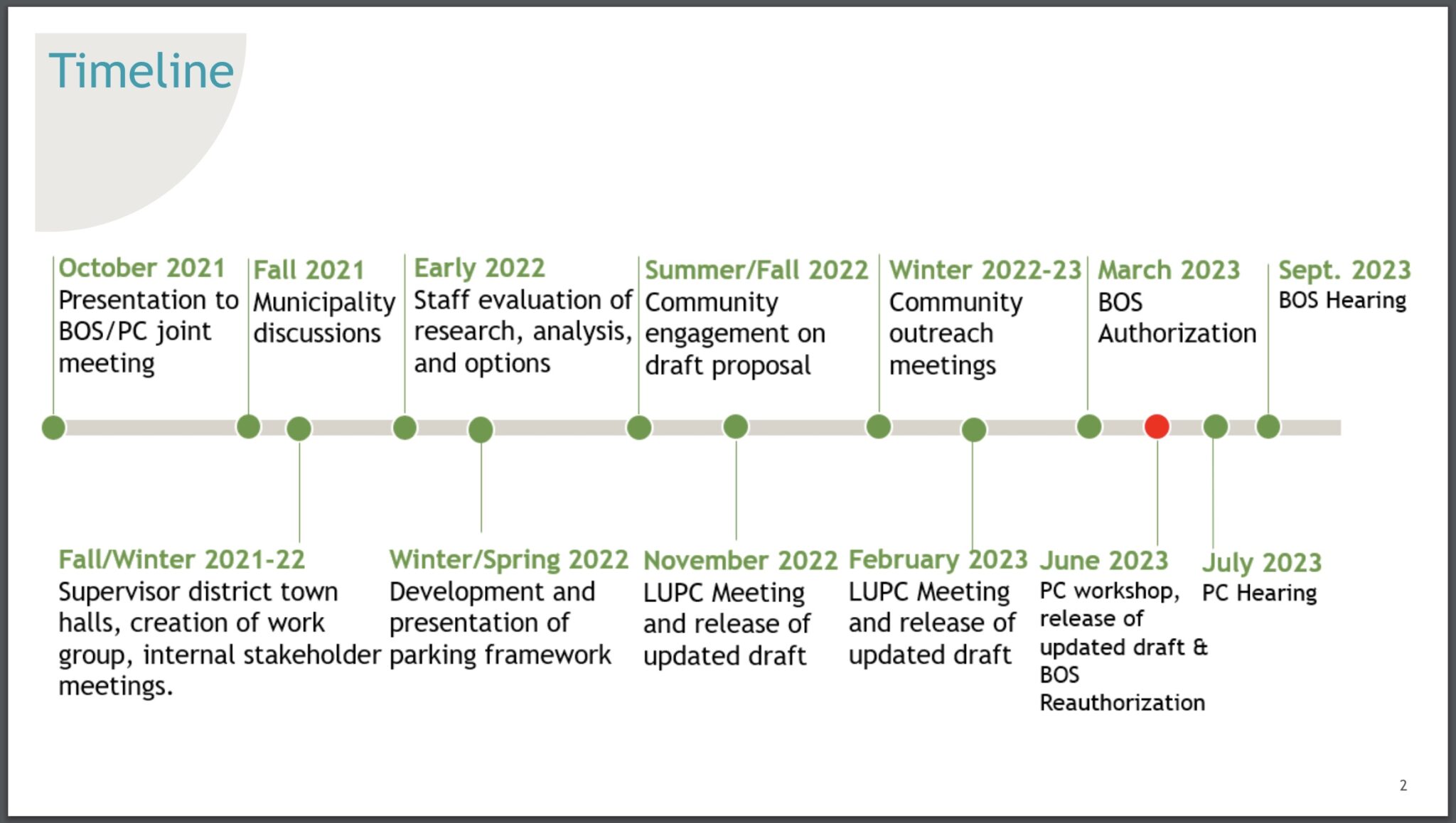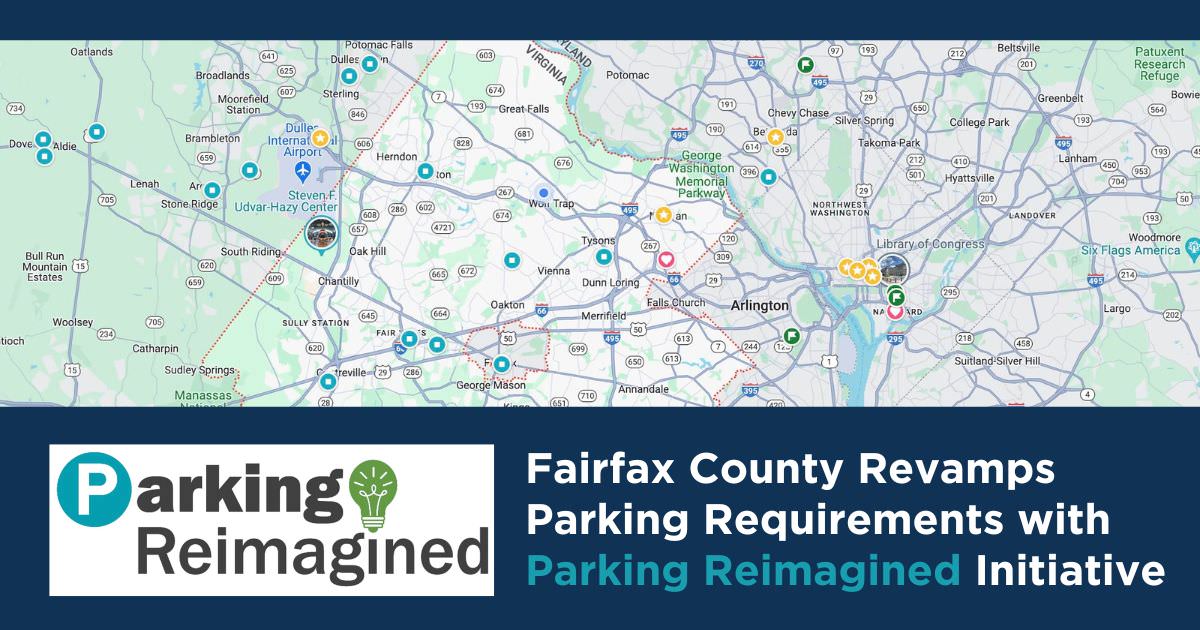As transportation has evolved in metropolitan areas, two things have become clear: building parking spaces has become more expensive, and the increasing density of suburban regions has changed commuters’ relationships with parking.

Fairfax County recently took concrete steps to address both of these issues with its innovative “Parking Reimagined” program.
While our transportation team has long been involved with helping developers reduce the need for parking spaces using innovative solutions, Fairfax County has continually led the way in developing new approaches to handling parking requirements for new developments.
What Is Parking Reimagined in Fairfax County?
Parking Reimagined is Fairfax County’s first comprehensive review of parking requirements since 1988. Adopted in September 2023 and in effect since January 1, 2024, the Parking Reimagined project is:
an evaluation of existing parking rates to determine if adjustments of requirements to meet current parking demand is appropriate … . Parking Reimagined included an in-depth evaluation of off-street parking and loading rates and regulations. The goal of this effort was modernization of parking and loading requirements. (Fairfax County website report)
In our experience, “modernization” of transportation networks, including parking, involves a variety of solutions and techniques. These include:
- determining options for shared parking
- conducting trip and parking counts to determine unique travel and parking utilization patterns at a property
- taking into account the effects of transit-oriented, transit-adjacent, and mixed-use properties on parking demand
- considering the effects of multimodal networks on the property in question
- incorporating TDM best practices into developments
In the case of Parking Reimagined, the County’s Department of Planning and Development and Land Development Services unit collaborated to review and modernize off-street parking and loading requirements in neighborhoods and commercial areas of the county.

The County addressed a number of areas where parking minimums can be reconsidered so that developers and communities don’t overbuild parking spaces:
- Tiered Parking Framework: Due to the varying nature of land use in the County, from urbanizing areas such as Tysons to rural areas, Parking Reimagined uses a tiered approach to reduce parking rates in densely populated areas that have robust public transit options or a strong mix of land uses.
- Residential Right-sizing: Parking rules have been adjusted depending on housing type. For example, requirements for multifamily developments have been slightly reduced to align with current trends.
- Environmental Enhancements: By rightsizing parking, the County aims to reduce stormwater run-off, increase green space preservation, and enhance tree canopy to promote sustainability.
- Loading Zones and Parking Lots: Loading requirements have been streamlined for delivery vehicles. New developments and redevelopments will require accessible parking and pedestrian-friendly parking to create safer and more inclusive experiences.
- Bicycle Parking: In an effort to encourage cycling as a sustainable transportation option for both residents and visitors, minimum bicycle parking requirements are now required countywide for new developments and redevelopments.
Sully District Supervisor Kathy Smith, who oversaw the Parking Reimagined initiative as chair of the Board of Supervisor’s land use policy committee, summed up the program concisely: “The county’s changed. We all know that. A diverse and urbanized county needs a variety of approaches to parking.”
White Paper: Parking Reduction Reduces the Costs of New Real Estate Development Projects
The cost associated with building new parking facilities greatly impacts the profitability of projects, and even their chances of being developed. When developing a new real estate project, it is important to understand that the amount of required parking can be reduced based on the unique characteristics of a site. Wells + Associates’ research paper uses real-world examples to illustrate how parking reductions can be achieved and how much money they can save.
Click to learn more:

